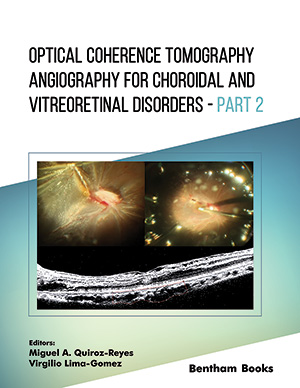Abstract
Background: While generally self-limited, febrile seizures result in significant familial distress. Ambulatory pediatric care providers must be prepared to counsel families on the causes, risk factors, management principles, and prognosis of children with febrile seizures.
Objective: To provide an updated, evidence-based review of febrile seizures focused on the needs of an ambulatory pediatric care provider.
Methods: A narrative review of the literature prioritizing landmark articles, metanalyses, longitudinal population longitudinal cohort studies and national level guidelines.
Results: Febrile seizures are aberrant physiological responses to fever in children caused by complex interactions of cytokine mediated neuroinflammation, environmental triggers, and genetic predisposition. Other than investigations to determine fever etiology, routine bloodwork, lumbar punctures, neuroimaging and electroencephalograms are low yield. The general prognosis is excellent, however, clinicians should be aware of long-term outcomes including: cognitive impairment with non-simple febrile seizures; neuropsychiatric associations; recurrent febrile seizure and epilepsy risk factors; and the association between complex febrile seizures and sudden unexpected death. Children with a high risk of recurrence, complex febrile seizures, limited access to care, or extreme parental anxiety may benefit from intermittent oral diazepam prophylaxis.
Conclusion: Clinicians should consider four management priorities: 1) terminating the seizure; 2) excluding critical differential diagnoses; 3) investigating fever etiology; and 4) providing adequate counselling to families. The clinical approach and prognosis of febrile seizure can be based on subtype. Children with non-simple (i.e. complex or febrile status epilepticus) febrile seizures require closer care than the vast majority of children with simple febrile seizures, who have excellent outcomes.
Keywords: Febrile seizures, febrile convulsions, status epilepticus, prognosis, counseling, recurrence, epilepsy.
[PMID: 34873647]
[http://dx.doi.org/10.1016/j.yebeh.2017.01.024] [PMID: 28236729]
[http://dx.doi.org/10.1111/dmcn.14642] [PMID: 32748466]
[http://dx.doi.org/10.1542/peds.2010-3318] [PMID: 21285335]
[http://dx.doi.org/10.1111/epi.13057] [PMID: 26122601]
[http://dx.doi.org/10.1056/NEJM197611042951901] [PMID: 972656]
[http://dx.doi.org/10.7573/dic.212536] [PMID: 30038660]
[http://dx.doi.org/10.1111/j.1528-1157.1994.tb05932.x] [PMID: 8275976]
[PMID: 24427491]
[http://dx.doi.org/10.1016/j.seizure.2018.12.004] [PMID: 30594055]
[http://dx.doi.org/10.1016/j.pediatrneurol.2010.02.011] [PMID: 20472192]
[http://dx.doi.org/10.1016/j.braindev.2009.09.019] [PMID: 19853393]
[http://dx.doi.org/10.1016/j.braindev.2008.11.012] [PMID: 19203855]
[http://dx.doi.org/10.1016/j.pediatrneurol.2008.07.017] [PMID: 19027582]
[PMID: 28883873]
[http://dx.doi.org/10.1016/j.pediatrneurol.2015.01.001] [PMID: 25682483]
[http://dx.doi.org/10.3345/kjp.2014.57.9.384] [PMID: 25324864]
[http://dx.doi.org/10.1056/NEJM199408183310703] [PMID: 8035839]
[http://dx.doi.org/10.1542/peds.108.4.e63] [PMID: 11581471]
[http://dx.doi.org/10.1016/j.pediatrneurol.2006.06.004] [PMID: 16939854]
[PMID: 28745219]
[http://dx.doi.org/10.1056/NEJMoa003077] [PMID: 11547719]
[http://dx.doi.org/10.1542/peds.2014-1822] [PMID: 25560438]
[PMID: 20448530]
[http://dx.doi.org/10.1542/peds.2015-0635] [PMID: 26371192]
[http://dx.doi.org/10.1007/s40264-013-0051-9] [PMID: 23657824]
[http://dx.doi.org/10.1016/j.vaccine.2020.01.046] [PMID: 32019703]
[http://dx.doi.org/10.1001/jama.2012.165] [PMID: 22357833]
[http://dx.doi.org/10.1542/peds.2016-0320] [PMID: 27273711]
[http://dx.doi.org/10.1001/archpedi.1996.02170300011001] [PMID: 8620224]
[http://dx.doi.org/10.1001/jamapediatrics.2013.2745] [PMID: 24126936]
[http://dx.doi.org/10.1542/peds.2016-0976] [PMID: 27273713]
[http://dx.doi.org/10.1097/01.inf.0000234067.84848.e1] [PMID: 16940831]
[http://dx.doi.org/10.1542/peds.2010-0887] [PMID: 21844054]
[http://dx.doi.org/10.1097/WCO.0b013e3280555160] [PMID: 17351489]
[http://dx.doi.org/10.1016/j.seizure.2021.05.022] [PMID: 34161903]
[http://dx.doi.org/10.1177/2633105520956973] [PMID: 33225279]
[http://dx.doi.org/10.1038/nrneurol.2010.178] [PMID: 21135885]
[http://dx.doi.org/10.1016/j.seizure.2018.04.023] [PMID: 29727742]
[http://dx.doi.org/10.1046/j.1528-1157.43.s.9.8.x] [PMID: 12383277]
[http://dx.doi.org/10.1016/j.braindev.2008.11.014] [PMID: 19201561]
[http://dx.doi.org/10.1111/j.1528-1157.1995.tb01006.x] [PMID: 7541745]
[http://dx.doi.org/10.1111/ane.13420] [PMID: 33822360]
[http://dx.doi.org/10.1542/peds.2015-3404] [PMID: 27012746]
[http://dx.doi.org/10.1542/peds.2004-2210] [PMID: 16263994]
[http://dx.doi.org/10.1016/j.yebeh.2017.04.021] [PMID: 28570964]
[http://dx.doi.org/10.5271/sjweh.3724] [PMID: 29574476]
[http://dx.doi.org/10.1016/j.seizure.2017.09.009] [PMID: 28957722]
[http://dx.doi.org/10.24953/turkjped.2020.03.001] [PMID: 32558408]
[http://dx.doi.org/10.3390/nu4070676] [PMID: 22852057]
[http://dx.doi.org/10.1177/0883073813483569] [PMID: 23576415]
[http://dx.doi.org/10.1056/NEJM198702263160901] [PMID: 3807992]
[http://dx.doi.org/10.1136/bmj.307.6898.225] [PMID: 8369681]
[http://dx.doi.org/10.1007/s13311-014-0263-4] [PMID: 24604424]
[http://dx.doi.org/10.1016/j.jpeds.2013.05.038] [PMID: 23809042]
[http://dx.doi.org/10.5698/1535-7597-14.6.345] [PMID: 25678870]
[http://dx.doi.org/10.1038/ncpneuro0605] [PMID: 17805245]
[http://dx.doi.org/10.1111/epi.14016] [PMID: 29399791]
[PMID: 30932454]
[http://dx.doi.org/10.1136/adc.2003.044743] [PMID: 14977713]
[http://dx.doi.org/10.1111/j.1553-2712.2001.tb00207.x] [PMID: 11483452]
[http://dx.doi.org/10.1097/INF.0b013e31815e4122] [PMID: 18316994]
[PMID: 30279715]
[http://dx.doi.org/10.1371/journal.pone.0055270] [PMID: 23383133]
[http://dx.doi.org/10.1097/PEC.0b013e318289e8f1] [PMID: 23528503]
[http://dx.doi.org/10.1542/peds.2009-2741] [PMID: 20566610]
[http://dx.doi.org/10.1097/PEC.0b013e31824d8b0b] [PMID: 22453723]
[http://dx.doi.org/10.1016/j.yebeh.2015.09.003]
[http://dx.doi.org/10.1002/14651858.CD009196.pub5] [PMID: 32270497]
[http://dx.doi.org/10.1111/j.1469-8749.1981.tb02019.x] [PMID: 7274593]
[PMID: 9007172]
[http://dx.doi.org/10.1093/pch/6.3.139] [PMID: 20084226]
[http://dx.doi.org/10.1016/S0887-8994(97)00171-9] [PMID: 9535301]
[http://dx.doi.org/10.1111/j.1528-1167.2008.01963.x] [PMID: 19125841]
[http://dx.doi.org/10.1016/j.braindev.2016.06.003] [PMID: 27613077]
[http://dx.doi.org/10.1016/j.ajem.2017.12.059] [PMID: 29317153]
[http://dx.doi.org/10.1136/archdischild-2018-316228] [PMID: 30926585]
[http://dx.doi.org/10.1177/00099228211017702] [PMID: 34014115]
[http://dx.doi.org/10.1111/ped.12058] [PMID: 23360347]
[http://dx.doi.org/10.1016/j.ejpn.2013.04.008] [PMID: 23702315]
[http://dx.doi.org/10.1007/s00431-020-03845-8] [PMID: 33125519]
[http://dx.doi.org/10.1002/14651858.CD003031.pub3] [PMID: 28225210]
[http://dx.doi.org/10.1002/14651858.CD003031.pub4] [PMID: 34131913]
[http://dx.doi.org/10.1056/NEJM199806113382403] [PMID: 9624192]
[http://dx.doi.org/10.1038/ncpneuro0922] [PMID: 18978801]
[http://dx.doi.org/10.1016/j.pediatrneurol.2008.02.006] [PMID: 18486819]
[http://dx.doi.org/10.1136/bmjopen-2019-035977] [PMID: 32912975]
[PMID: 2653172]
[http://dx.doi.org/10.1111/j.1528-1157.2000.tb00182.x] [PMID: 10756406]
[http://dx.doi.org/10.1016/j.yebeh.2013.03.034] [PMID: 23669493]
[http://dx.doi.org/10.1046/j.1528-1157.2001.10000.x] [PMID: 11207784]
[http://dx.doi.org/10.1093/brain/awg262] [PMID: 12937081]
[http://dx.doi.org/10.1002/ana.24081] [PMID: 24318290]
[http://dx.doi.org/10.1111/epi.12136] [PMID: 23566067]
[http://dx.doi.org/10.1016/j.yebeh.2019.03.039] [PMID: 31009825]
[http://dx.doi.org/10.1016/j.yebeh.2015.04.067] [PMID: 26043164]
[http://dx.doi.org/10.1684/epd.2021.1260] [PMID: 33814363]
[http://dx.doi.org/10.1016/j.braindev.2020.01.005] [PMID: 32019687]
[http://dx.doi.org/10.1016/j.schres.2004.07.004] [PMID: 15653280]
[http://dx.doi.org/10.1001/jamapediatrics.2019.3343] [PMID: 31589251]
[http://dx.doi.org/10.1016/S0022-3476(05)83136-1] [PMID: 8151472]
[http://dx.doi.org/10.1056/NEJM199210153271603] [PMID: 1528207]
[http://dx.doi.org/10.1016/S0022-3476(05)82816-1] [PMID: 2137875]
[http://dx.doi.org/10.1001/archpedi.1997.02170410045006] [PMID: 9111436]
[http://dx.doi.org/10.1111/j.1528-1167.2010.02522.x] [PMID: 20196795]
[http://dx.doi.org/10.1111/epi.12550] [PMID: 24730690]
[http://dx.doi.org/10.1016/S0387-7604(00)00187-X] [PMID: 11111061]
[http://dx.doi.org/10.1212/WNL.47.2.562] [PMID: 8757039]
[PMID: 7549552]
[http://dx.doi.org/10.1016/j.braindev.2018.05.006] [PMID: 29801922]
[http://dx.doi.org/10.3171/jns.1995.82.2.0220] [PMID: 7815149]
[http://dx.doi.org/10.1186/s42494-020-00027-9]
[http://dx.doi.org/10.1093/brain/awr239] [PMID: 21914715]
[http://dx.doi.org/10.3389/fneur.2017.00021] [PMID: 28203222]
[http://dx.doi.org/10.1016/S0140-6736(08)61198-8] [PMID: 18692714]
[http://dx.doi.org/10.1001/jamanetworkopen.2019.2739] [PMID: 31026025]




























